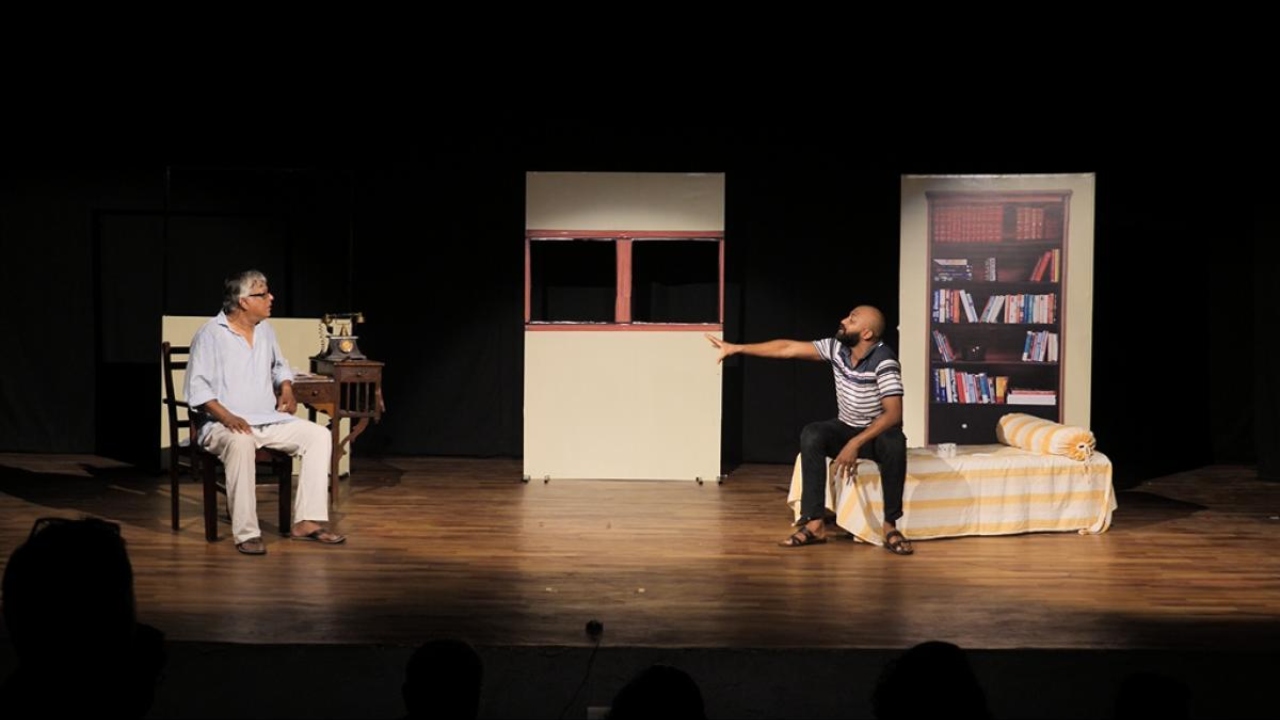

Over the years, theatre performances have been enhanced by sets and props. These designs have evolved over time — from elaborate setups to minimalist ones. Today, stage designers are practical. Their works are minimal, suggestive, and leave the audience arriving at their own conclusions.
Theatre has transformed from straightforward to experimental — leading to this change. There is “no fixed idea of a stage”, with many plays happening in intimate spaces. “There was a time when too much emphasis was given to the stage to look realistic,” says Vinay Varma, theatre practitioner and head of Sutradhar, a theatre group from Hyderabad.
People focused more on the set than the actor, he adds. “This realisation made theatre practitioners think practically and convinced them to not spend too much on set designs,” notes the film actor and scriptwriter.
Sridhara Murthy, an artiste who began designing the stage for Kannada plays in the 2000s, says directors are more interpretative than ever before. “They analyse a script or a story from different angles, and read between the lines now,” says Murthy, whose journey started in Abhinaya Taranga, a well-known theatre school from Bengaluru.
This is in sharp contrast to how he set up the stage around two decades ago. “Realistic theatre was popular back then. Directors would recreate the text as it is. The role of a stage designer was often reduced to a stage manager as he or she would receive instructions from the director and arrange the props on stage accordingly,” he says.
However, Murthy is quick to clarify that realistic theatre isn’t bereft of craftsmanship. He substantiates the argument by talking about the play ‘Mookhabali’, which was directed by veteran Pramod Shiggaon, and first staged in 2001.
Its story was about how a girl hailing from a poor background faces the challenge of adjusting to a well-off family. “We made the doors and windows of both houses using thermocol, they looked realistic. We had to show a contrast between the houses, so we took references from vasakal carvings seen during that time, for the doors of the rich family. The architecture was the same but the detailing was different for both houses. It was a ‘neat’ and straightforward production,” he recollects.
There are no limits to what one can accomplish when you thrive on creative freedom to justify a concept, says Murthy. “For a production called ‘Algorithms’, directed by Chanakya Vyas, I created glass screens of 8-10 feet,” he says. The play aimed at showing how the lives of cab drivers are dependent on mobile phones and apps. “Through those large screens, we reflected on the use of mobile phones. For instance, there is a scene in which the driver makes a video call to his girlfriend. We projected his girlfriend’s video on the glass screen,” he says.
He further explains, “To portray a car, we gave a placard to the driver. We projected his mobile chats on it and when he was driving, the placard doubled up as a steering wheel. We used 3-inch dia wheels and acrylic-based seating to complete the car.” Matching with the title, he drew a circuit-board design on the floor and all the action took place within that design, says Murthy.
Veteran theatre personality, Maltesh Badiger, who runs the Bengaluru-based culture organisation Adamya Ranga Samskruti Trust, along with wife and theatre director Chaya Bharghavi, stresses on the importance of props in stage designing. “In 1994-95, I introduced foam in Kannada theatre.
Till then, plywood and Plaster of Paris (POP) were used to make different props. Foam was a highly-flexible element and it has now become an inevitable part of theatre. I created trees, leaves, crowns, pillars of a palace, and more using foam,” he says.
Discarded materials like old radios, phones, plugs, and caps can be used for making props, he adds.
Badiger observes that veteran C G Krishnamurthy’s plays would involve elaborate sets and in the 80s, the likes of Shashidhar Adapa, Suresh Angali, Iqbal Ahmed, and Pramod Shiggaon brought a new wave in stage designing in Kannada theatre, after graduating from reputed institutions like Ninasam and National School of Drama.
Minimalistic design helps in cutting the cost of production. “To show a rich man’s drawing room, one can either have a 3-piece plush sofa set and a marble teapoy, with an intricately carved flat showing doorways to the interiors. Or, one can just use two good-looking, polished cane chairs with a small matching teapoy and have two flats designed and placed in such a way that it looks the defined place. Self-sustaining organisations rack their brains and have overcome financial shortcoming by using minimalistic or symbolic set designs,” stresses Varma.
Western perspective
Theatre, unlike cinema, isn’t considered an industry yet in India. Production houses do not fund plays here.
But set designers are happy that their job is better acknowledged now than before.
In the West, 10-15 days are kept aside for technical rehearsals (including stage design corrections and lighting), says Murthy, who worked in an Indo-German collaboration called ‘Boy With A Suitcase’, directed by Andrea Gronemeyer from Schnawwl Theatre.
“In the West, pre-production work takes a year. This is possible there because each theatre group owns a venue. In India, affording a theatre space is an issue. We are given access to the venue only on the day of the performance, sometimes just a few hours before the play,” he says.
There’s a solid support from the system in Europe for theatre, thereby dilating the financial congestion to a large extent, observes Vinay. "The one performance that I distinctly remember having a humongous set, put to flawless use was, Broadway’s Musical CATS. On the other hand, plays on existentialism, popular in Europe after the World War, have used minimum space and set. Today, most bunkers there, I’m told, have become theatre spaces. Therefore, it’s all about cleverly using the space available rather than play to the galleries, he reasons.